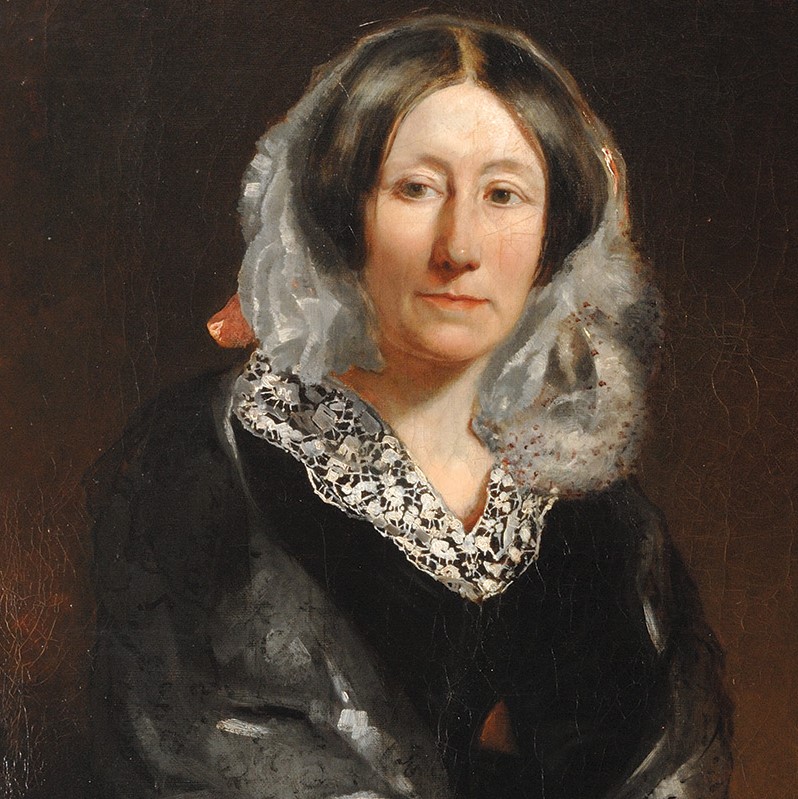Mary Somerville

Author: Dr Ian Overton
As Ada Lovelace day 2020 approaches, I find myself reflecting upon one of her mentors - the polymath Mary Somerville, who helped to spark the collaboration between Lady Lovelace and Charles Babbage. Although Somerville reached near-mythical status in her own lifetime and in 2017 became the only non-royal female to appear on Royal Bank of Scotland banknotes since printing began in 1727 – the substance of her achievements and life remain obscure to many.
Born Mary Fairfax in December 1780 and living until almost 92 years old, Somerville survived three of her five children and her two husbands. Typical for women at that time, she was given little formal education; only receiving her first writing lessons at the age of thirteen. Her Uncle was an early mentor, providing assistance with reading Latin and who reassured her "...that in ancient times many women - some of them of the highest rank in England - had been very elegant scholars". A first husband passed away in 1807, who was unsupportive of her academic interests; she later reflected "Although my husband did not prevent me from studying, I met with no sympathy whatever from him, as he had a very low opinion of the capacity of my sex."
Largely self-taught, Somerville published her first scientific paper at the age of 45 years old (1826) – representing one of the very earliest studies of photomagnetisation, which remains an active field of research to this day. Her 1826 paper is also a landmark as the first publication by a female author in 'Philosophical Transactions of the Royal Society', the oldest and longest-running scientific journal in the world. Her academic career was cemented by authoring several highly acclaimed books, which became central texts in prestigious Universities, including Cambridge. Perhaps the most notable being 'On The Connexion of the Physical Sciences' (1834) which drew together multiple scientific disciplines and contributed to the discovery of Neptune; specifically her observations that an unknown planet may be influencing the orbit of Uranus influenced others to pursue this avenue of research. The term 'scientist' was coined in a review of this book, inspired by her multidisciplinary approach.
The use of empirical observation to determine truth is a key pillar of science and Mary Somerville championed the scientific method, though was maligned when her findings threatened religious dogma. For example, she wrote "Geologists had excited public attention and had shocked the clergy... by proving beyond a doubt that the formation of the globe extended through enormous periods of time... after I had published my work on Physical Geography, I was preached against by name in York Cathedral." Indeed, Somerville faced and triumphed over pervasive adversity, living at a time when women were very much second-class citizens. In her eighties, Somerville wrote "Age has not abated my zeal for the emancipation of my sex from the unreasonable prejudice too prevalent… against a literary and scientific education for women".
Her courageous campaigning for gender equality included being a member of the 'General Committee for Woman Suffrage in London', signing multiple petitions about suffrage and also petitioning Universities to change policy in order to allow women to earn degrees. Although excluded from holding formal University qualifications, Somerville was celebrated worldwide. She became an honorary member of many learned societies, including the Royal Irish Academy, the Societé de Physique et d'Histoire Naturelle Geneva, and was the first female honorary member of the Royal Astronomical Society (RAS) with Caroline Herschel (1835); although it was not until 1916 that the first female Fellows were elected to RAS. Somerville was recognised with a sculpture located in the Royal Society of London's Great Hall and the eponymous Somerville college in Oxford was founded in 1879 as a place for women at a time when Universities refused them entry. However, it took a further 41 years (1920) before women could matriculate, receive degrees and join Oxford University faculties.
Much more could be said about Somerville and her huge accomplishments - please see some suggested further reading below. Her memoir, which I have quoted in this short essay, is particularly noteworthy; giving first-hand insights into her thinking and sharing original correspondence that underlines the esteem she received from her contemporaries, including Michael Faraday. Considered in 2020, here in Belfast, the scarce opportunity for education and rife discrimination of Somerville's time is absolutely repugnant and outrageously wrong. It may be tempting to reflect upon progress made since the Victorian era, yet we must keep firmly in mind that discrimination against women persists to the present day. For example, many experience obstacles to educational opportunity – not least Nobel laureate Malala Yousafzai, whose autobiography 'I Am Malala: The Story of the Girl Who Stood Up for Education and was Shot by the Taliban' was published in 2013. Mary Somerville's life offers an amazingly inspirational example of a talented and determined woman who made monumental contributions to humankind. At the same time, her story brings sharp focus upon the injustice of the bigotry that plagued her endeavours; may this awareness galvanise us in working to further Somerville's aspirations for gender equality.
Further reading
- Memoir: 'Personal Recollections, from Early Life to Old Age, of Mary Somerville' by Mary Somerville and Martha Somerville (1873) https://archive.org/details/personalrecolle00somegoog
- 'On the Magnetizing Power of the More Refrangible Solar Rays' by Mary Somerville (1826) Philosophical Transactions of the Royal Society of London volume 116, pages 132-139 https://archive.org/details/jstor-107805
- 'Mary Somerville: Science, Illumination, and the Female Mind.' by Kathryn A. Neeley (2001, Cambridge University Press) https://books.google.co.uk/books?id=RwF-VBDJwKIC
- History of Somerville College: https://www.some.ox.ac.uk/about-somerville/history/
- United Nations Office of the High Commissioner for Human Rights, combating discrimination against women: https://www.ohchr.org/EN/Issues/Discrimination/Pages/discrimination_women.aspx
- Oxford University, 6 October 2020, Oxford University recognises 100-year anniversary of the formal admission of women: https://www.ox.ac.uk/news/2020-10-06-oxford-university-recognises-100-year-anniversary-formal-admission-women (accessed 9 October 2020)
Acknowledgement
Thanks to Clare Anderson for helpful discussion.
Dr Ian Overton leads the Data Intensive Biomedicine team and the Medical Bioinformatics Research Section at the Patrick G Johnston Centre for Cancer Research, Queen's University Belfast.
